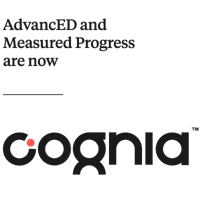What effect does student engagement have on student performance and school quality? A lot, according to the more than 80,000 hours of classroom observations we conducted around the world. Our research found significantly higher student performance at schools that measure fundamental school quality factors and boast high levels of student engagement. When students are committed—and behaviorally, cognitively and emotionally engaged—they participate actively in class, feel safe and complete more challenging work that meets their personal learning needs.
School leaders agree. According to the 2018 Gallup Survey of K-12 School District Superintendents, roughly nine out of 10 superintendents say student engagement is one of the three most important indicators of an effective school.
Now more than ever, educators have the opportunity to boost student engagement and achievement school-wide by delivering a quality educational experience focused on the learner. By bringing non-academic and academic measures together in an embedded, continuous and systemic process—and examining the entire learning environment—schools and districts can increase student engagement and positively impact student performance.
To learn more about continuous improvement strategies, download this infographic → Connecting what matters: school quality factors that impact student learning.
A Focus on Students
While the idea of continuous improvement is not new to the educational community, many districts have seen short-term improvements taper off; often, school leaders don’t know where to look for the best resources.
In many cases, the best first step is to ensure a thorough understanding of continuous improvement. In the AdvancED | Measured Progress white paper, Meeting the Promise of Continuous Improvement, we define continuous improvement as “an embedded behavior within the culture of a school that constantly focuses on the conditions, processes, and practices that will improve teaching and learning.”
It is equally important to understand what continuous improvement is not: compliance-centered improvement efforts focused on the educational institution instead of the learners. An institution-centered approach is not sustainable because plans are based on achieving specific time-based targets, rather than on long-term systemic change. Decades of punitive accountability measures have left schools feeling the need for a quick fix that keeps them too focused on low level compliance without the substantive long-range change that is the promise of continuous improvement.
Instead, schools should introduce and institute an ongoing process focused on learners. By addressing student needs, a focus on learners inherently increases student engagement—a critical first step in improving outcomes. We need to facilitate the type of choice that empowers students to own their education—choice of learning style, delivery method and environment. This learner-centric focus promotes long-lasting and satisfying change.
Strategies for Success
There is no one-size-fits-all approach to continuous improvement. But in more than 40,000 classroom observations across the country and around the world, we’ve found common strategies that successful and effective schools implement.
1. Adopt a research-based framework. A system like the AdvancED Continuous Improvement System offers proven processes, protocols and personalized professional services, as well as a suite of research-based tools and resources. 36,000 members of our network embark on their improvement journeys with the tools available through eProve™, which include:
- Surveys to collect and analyze meaningful data for stakeholders
- Tools for classroom observations
- Diagnostics to analyze institutional performance and student learning
- A workspace for document sharing and successful engagements
- A process for strategic thinking and improvement planning
Such a system offers customized guidance and empowerment through the planning and implementation of a continuous improvement journey.
2. Take a holistic approach spanning academic and non-academic measures. It’s important for schools, stakeholders, teachers, and leaders to look at multiple factors that ultimately affect student outcomes, such as teaching and learning, resource allocation, and school climate and culture. We have identified seven research-based school and system quality factors that are key to driving improvement.
- Clear direction
- Healthy culture
- High expectations
- Impact of instruction
- Resource management
- Efficacy of engagement
- Implementation capacity
3. Implement a balanced assessment system. The importance of a balanced assessment system is widely understood, but there are varying definitions when it comes to different areas of assessment. To help set clear direction for leaders, teachers, and learners, it’s important to use terms consistently to ensure good communication; incorporate each assessment type into a continuous improvement framework; and promote a clear understanding of each assessment type’s purpose. Very broadly, we define the four main components of a balanced assessment system as:
- Formative classroom assessment practices
- Benchmark assessments
- Interim assessments
- Statewide accountability assessment
For more detailed descriptions, see our balanced assessment system infographic.
The Big Picture
AdvancED and Measured Progress have come together to help you connect school quality with student outcomes. Additional strategies for continuous improvement are illustrated in our infographic—Connecting what matters: school quality factors that impact student learning. By applying rigorous, research-based approaches to school quality within a continuous improvement framework, you can create effective learning environments that cultivate and nurture learner success.



